The iconic image of a flamingo balanced perfectly on a single slender leg has captivated humans for centuries. This peculiar posture, often maintained for hours on end, has been the subject of scientific inquiry, cultural symbolism, and even playground imitation. While many birds occasionally rest on one leg, flamingos have turned this behavior into an art form, standing with seemingly effortless grace in waters around the world. But why exactly do these vibrant pink birds prefer this unusual stance? The answer involves a fascinating blend of physiology, thermodynamics, and evolutionary adaptation that reveals just how remarkable these birds truly are.
The Classic Mystery of Flamingo Posture
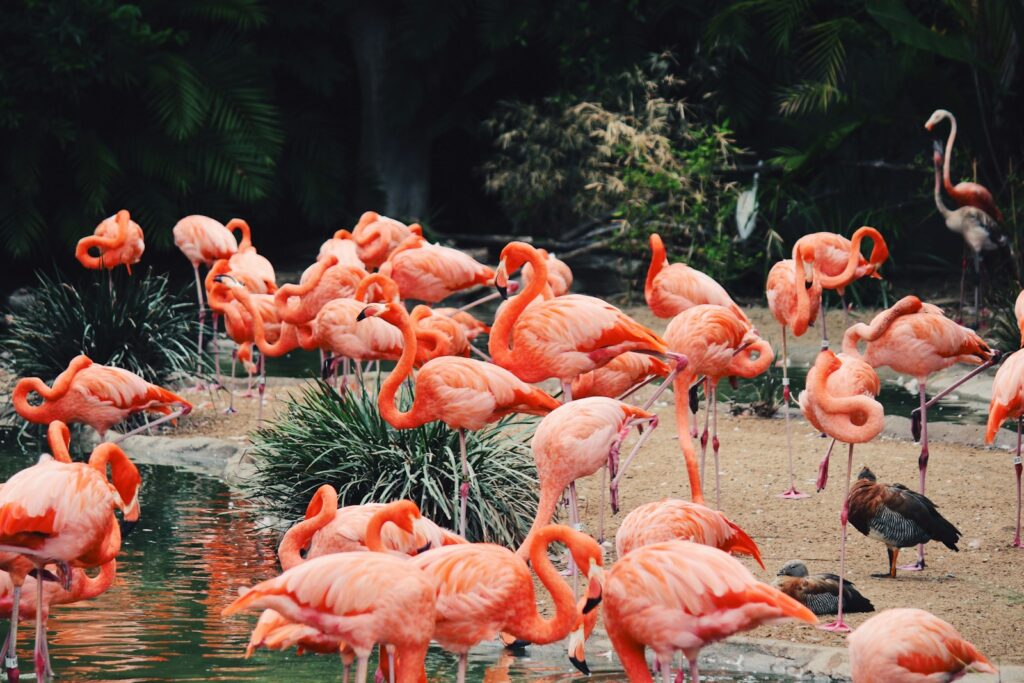
For decades, scientists and bird enthusiasts have observed flamingos’ distinctive one-legged stance and proposed various theories to explain it. Early hypotheses ranged from reducing muscle fatigue to keeping one foot dry. Some researchers even suggested it might be a way to mimic the reeds and vegetation in their habitat as a form of camouflage. Until recently, these theories remained largely speculative, based more on observation than rigorous scientific testing. The question of why such an apparently unstable and energy-intensive posture would evolve in the first place continued to puzzle researchers who recognized that such a distinct behavior must serve a specific evolutionary advantage.
The Thermoregulation Hypothesis
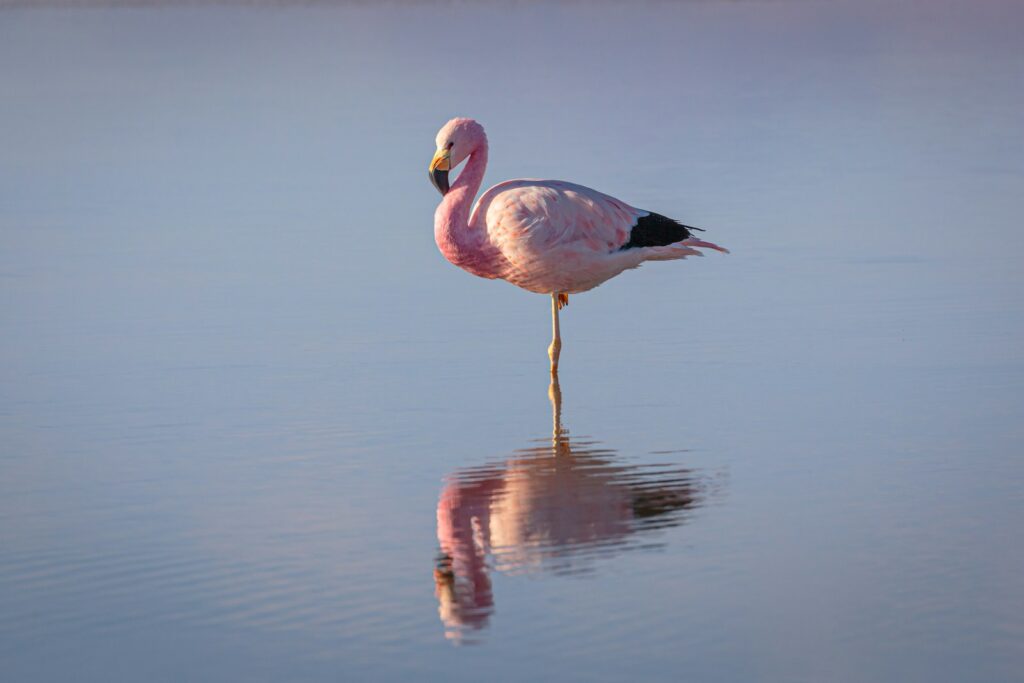
One of the most compelling explanations for flamingos’ one-legged stance involves thermoregulation—the process by which animals maintain their optimal body temperature. Flamingos spend much of their time standing in shallow, cool waters where heat loss can be significant. By tucking one leg close to their warm body, they reduce the surface area exposed to the cool water, thereby conserving body heat. This theory gained scientific support when researchers observed that flamingos tend to stand on one leg more frequently in cooler water than in warmer environments. The thermoregulation hypothesis makes intuitive sense from an energy conservation perspective, as maintaining body temperature requires less metabolic energy than constantly generating new heat.
Anatomy That Defies Physics
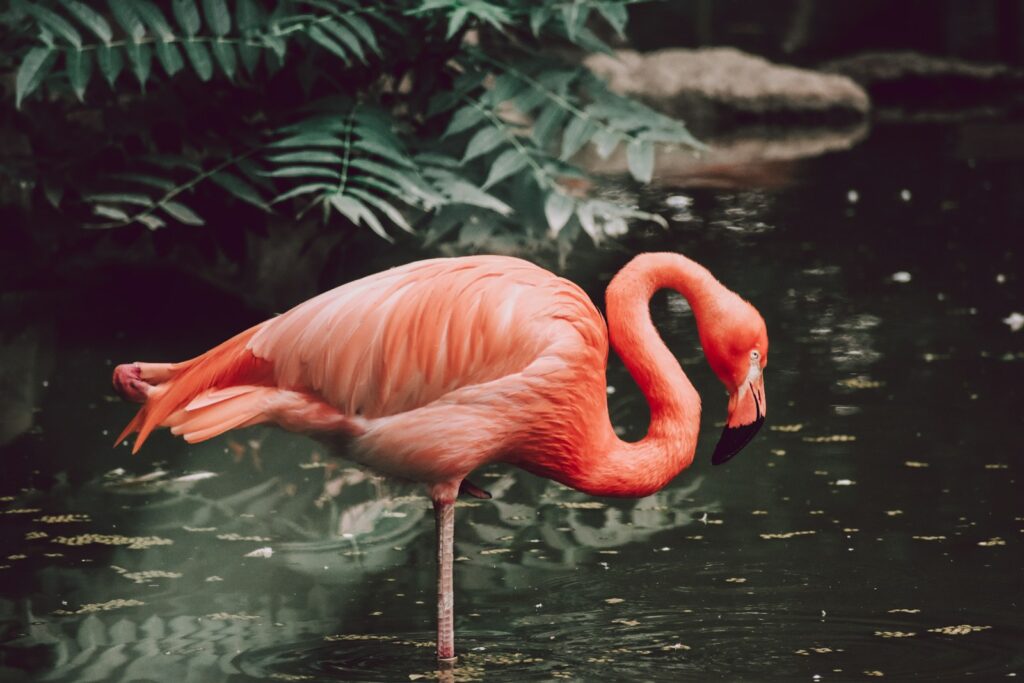
The flamingo’s ability to maintain balance on one leg for extended periods appears to defy the basic principles of physics. However, their unique anatomy makes this seemingly challenging posture remarkably efficient. Flamingos possess specialized leg joints and tendons that create a “locking mechanism” when the leg is fully extended. This anatomical adaptation allows them to maintain their one-legged stance without active muscle engagement. In essence, their skeletal structure works like an automatic support system, similar to how a tensioned tent pole remains upright. This passive stability means that, contrary to appearances, standing on one leg actually requires less muscular effort for a flamingo than standing on two legs would—a brilliant evolutionary solution that transforms what looks like an acrobatic feat into an energy-saving position.
The Scientific Breakthrough
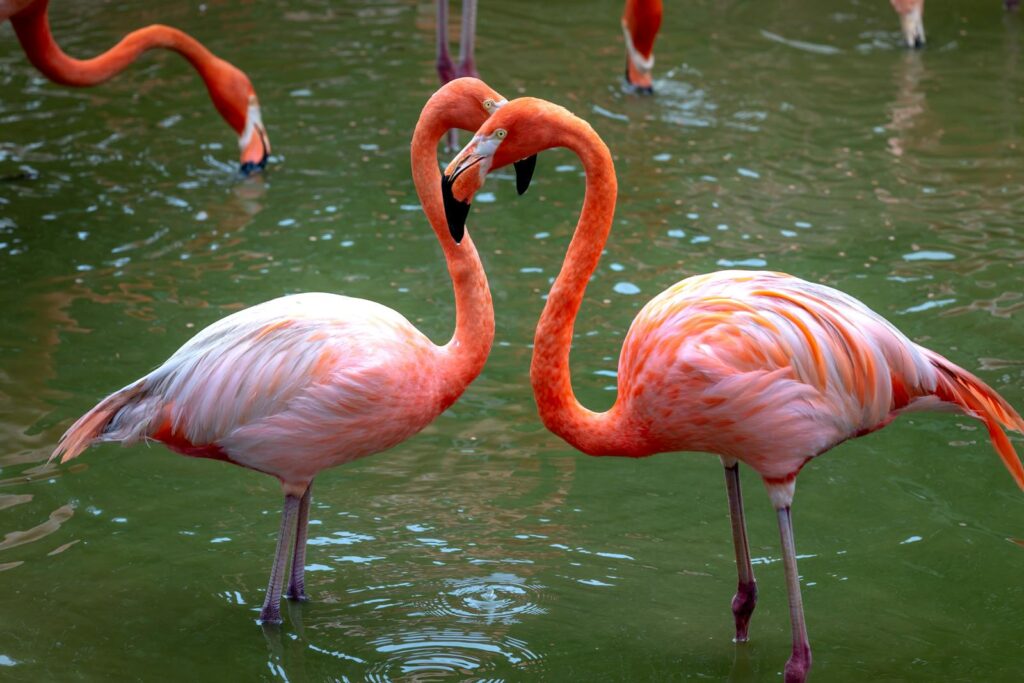
In 2017, researchers from Georgia Tech conducted groundbreaking experiments that revolutionized our understanding of flamingo posture. They studied both living flamingos and, remarkably, flamingo cadavers, to determine the mechanics behind their one-legged stance. The results were astonishing: even dead flamingos could be balanced on one leg with minimal support, but would immediately collapse when positioned on two legs. This counterintuitive finding proved that the one-legged posture relies on the bird’s unique skeletal structure rather than active muscle control. The researchers dubbed this phenomenon “passive gravitational stay mechanism,” essentially revealing that flamingos stand on one leg not despite gravity but because of how their bodies interact with it—a perfect example of evolutionary biomechanics.
Energy Conservation Beyond Heat
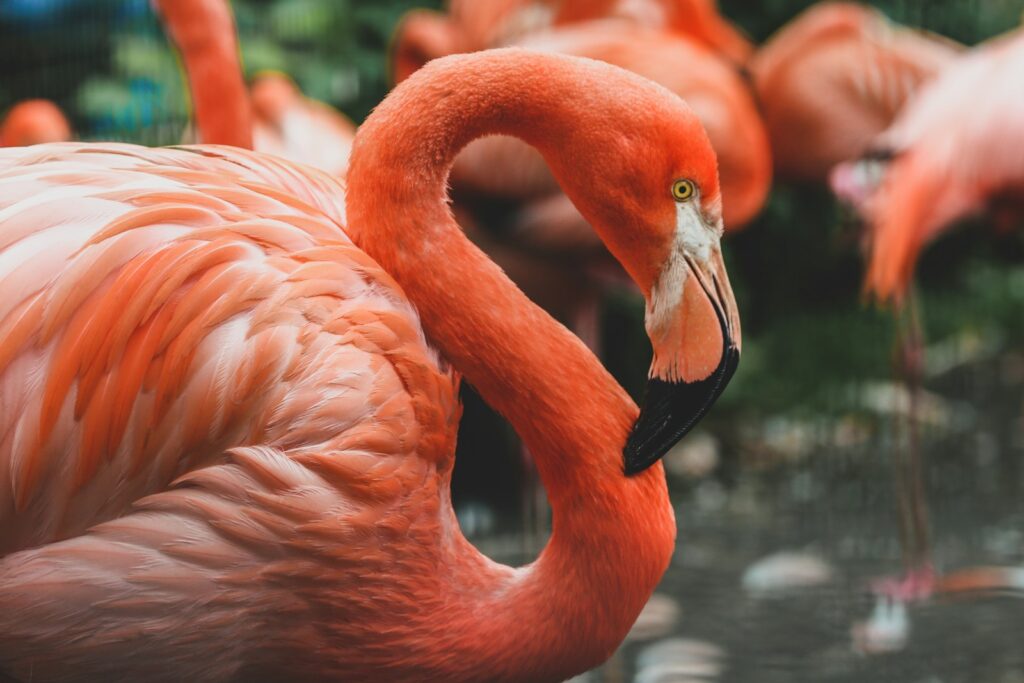
While thermoregulation explains part of the equation, energy conservation extends beyond just heat retention. Flamingos are filter feeders that spend hours wading through shallow waters, straining tiny organisms from the water with their specialized beaks. This feeding strategy requires minimal movement and maximum efficiency. By adopting the one-legged stance, flamingos reduce muscle fatigue during these extended feeding sessions. The passive locking mechanism in their legs allows them to remain virtually motionless while expending almost no energy maintaining their position. This energy-saving adaptation is particularly valuable for birds that may need to fly long distances between feeding and breeding grounds, where every calorie conserved can be crucial for survival.
The Sleep Factor
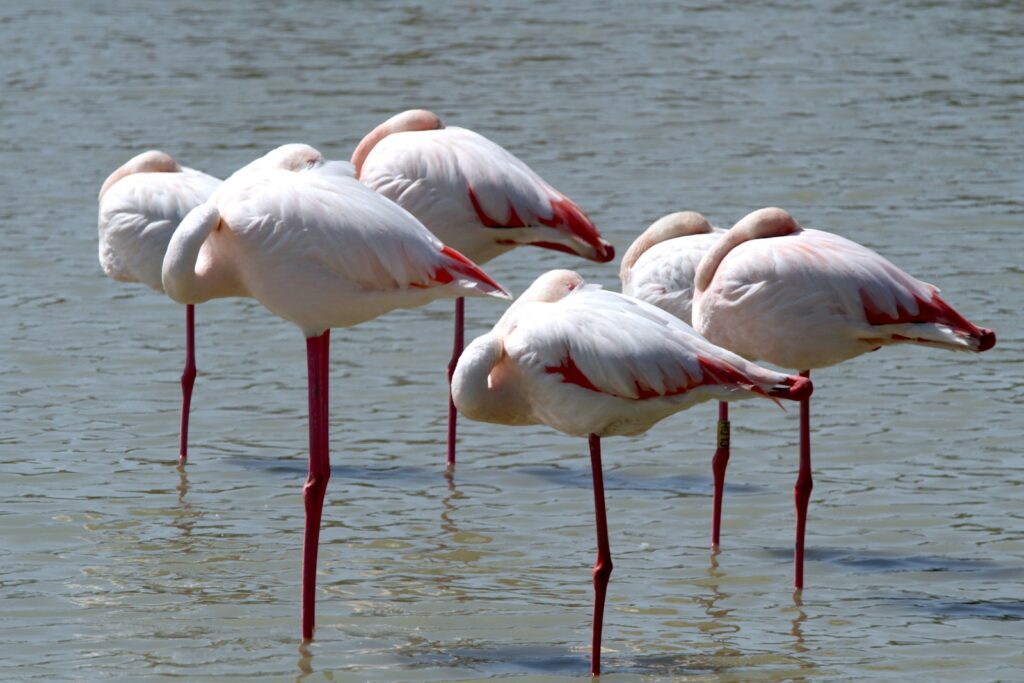
Flamingos frequently sleep while standing on one leg, adding another dimension to this behavioral adaptation. Unlike humans, many birds can enter a state called unihemispheric slow-wave sleep, where one brain hemisphere remains alert while the other sleeps. Standing on one leg during this partial sleep state may help flamingos remain vigilant against predators while still getting essential rest. The locked-leg mechanism provides stability even during sleep, preventing them from toppling over. This ability to rest securely while maintaining readiness for flight represents an evolutionary compromise between the need for sleep and the necessity of predator awareness—particularly important for birds that often inhabit exposed, shallow water environments where they might be vulnerable.
Comparative Bird Behavior
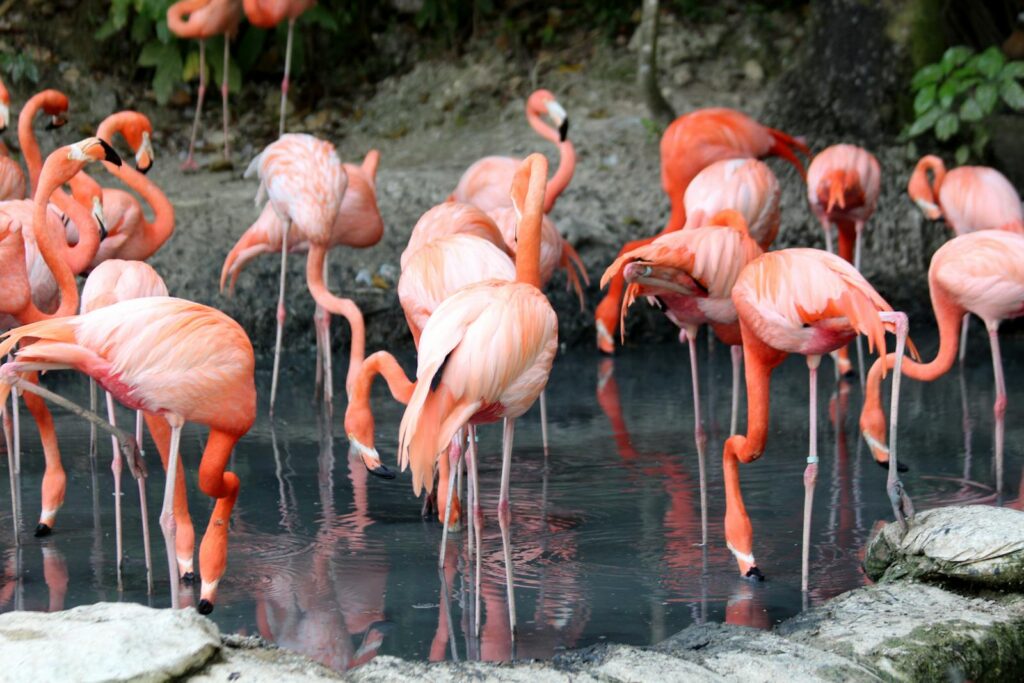
While flamingos are the most famous one-legged standers in the avian world, they’re not alone in this behavior. Many wading birds, including herons, storks, and even some ducks, occasionally adopt a one-legged stance. However, flamingos take this adaptation to an extreme, spending up to 80% of their standing time balanced on a single leg. The prevalence of this behavior across different bird species suggests convergent evolution—where similar environmental pressures lead to comparable adaptations in unrelated species. The fact that this posture appears most commonly in birds that wade in water supports the thermoregulation hypothesis while highlighting how different species have refined this strategy to varying degrees based on their specific environmental challenges.
The Social Dimension
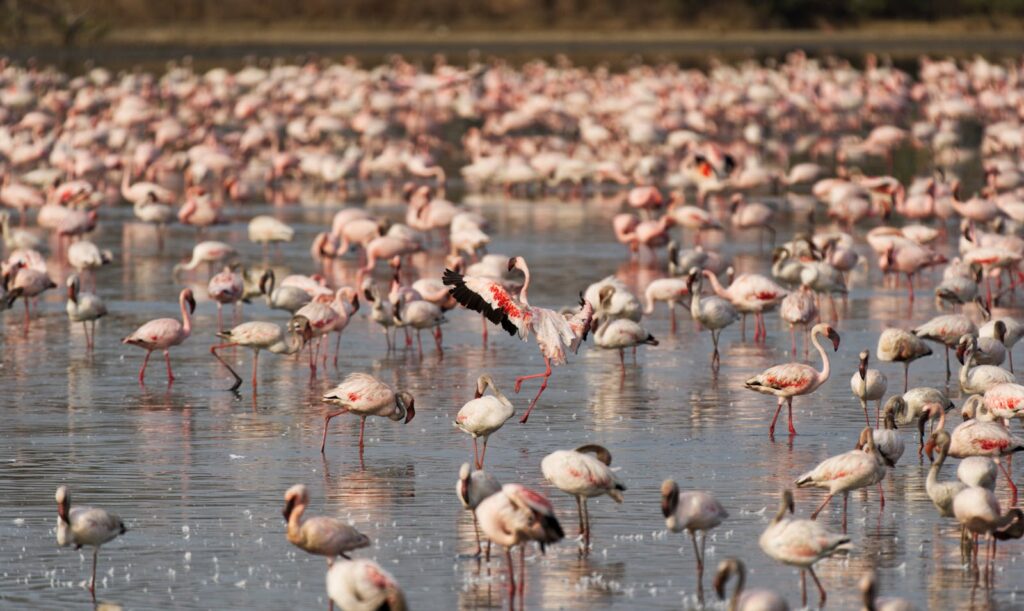
Flamingos are highly social birds that live in colonies numbering from hundreds to over a million individuals. Within these dense groupings, synchronized behavior often emerges, with large numbers of birds simultaneously adopting the one-legged stance. This social dimension suggests there might be communication or signaling aspects to the behavior beyond purely physiological benefits. Some researchers have proposed that one-legged standing could serve as a visual indicator of alertness or health within the flock. An individual’s ability to maintain the stance for extended periods might demonstrate fitness to potential mates or establish social hierarchy within the group, adding a layer of social complexity to what initially appears to be a simple physical adaptation.
Environmental Triggers
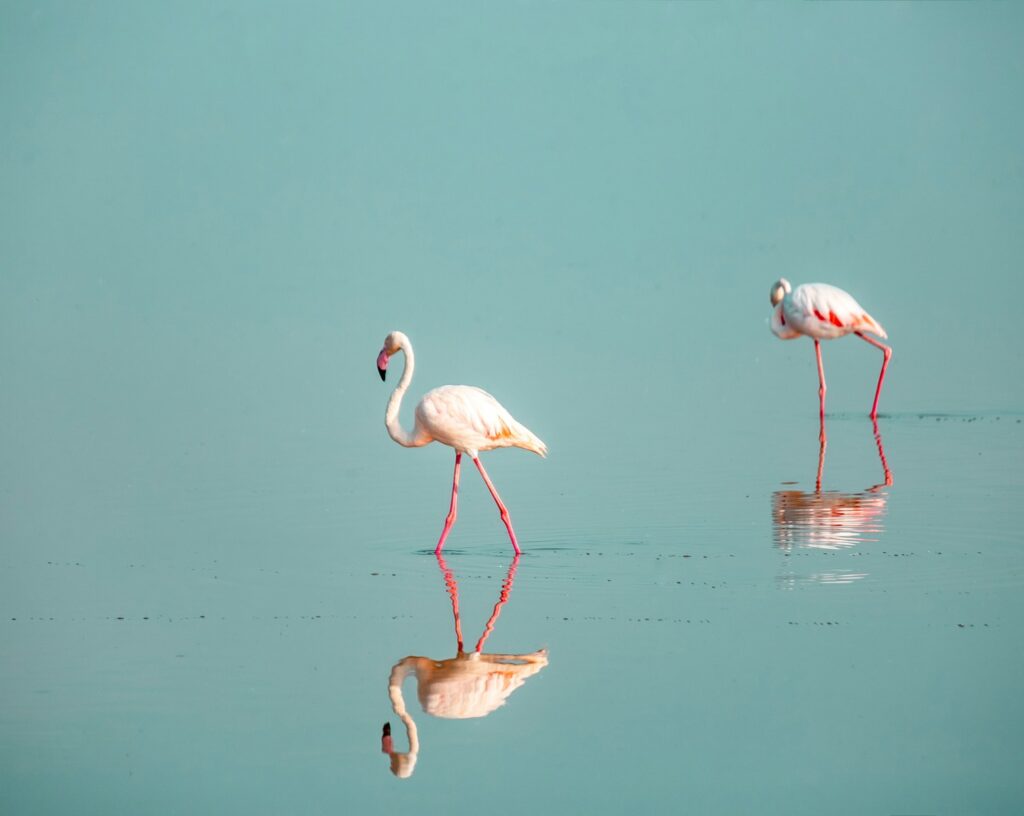
Careful observation of flamingo behavior reveals that environmental factors significantly influence when they choose to stand on one leg. Temperature plays a crucial role, with flamingos more likely to adopt the one-legged stance in cooler conditions. Wind speed and water depth also appear to affect this behavior, with higher frequencies of one-legged standing observed during windy days and in deeper water. These correlations support both the thermoregulation hypothesis and suggest additional factors may be at play. The birds seem to make continuous assessments of their environment, switching legs or adopting two-legged stances based on changing conditions—a sophisticated behavioral adaptation that allows them to respond dynamically to environmental challenges.
Flamingo Species Variations
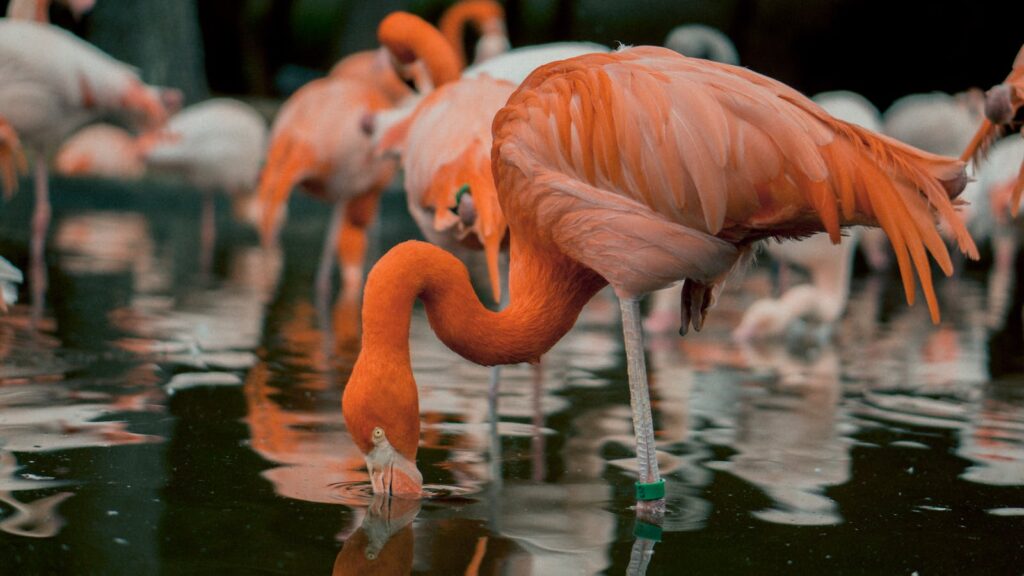
There are six species of flamingos distributed across the Americas, Africa, Asia, and Europe, and while all display the characteristic one-legged stance, there are subtle variations in how frequently they employ it. The Greater Flamingo (Phoenicopterus roseus), the largest and most widespread species, appears to spend more time on one leg than smaller species like the Lesser Flamingo (Phoeniconaias minor). These differences may relate to body mass, leg length, and the typical environmental conditions of their habitats. Larger flamingos, with their greater surface area relative to volume, may benefit more from reducing heat loss through the legs. These species-specific adaptations demonstrate how evolution has fine-tuned this behavior to match the particular challenges faced by each flamingo species in their respective environments.
Cultural Significance and Human Fascination
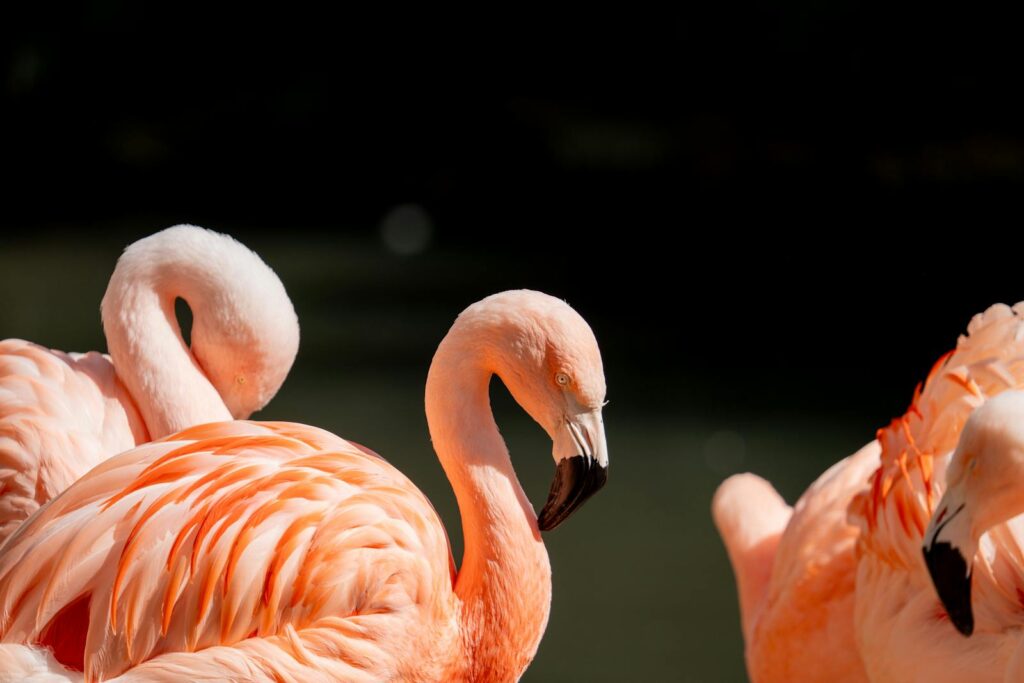
The flamingo’s distinctive one-legged posture has cemented its place in human culture and imagination. From lawn ornaments to Lewis Carroll’s croquet mallets in “Alice in Wonderland,” the one-legged flamingo has become an instantly recognizable symbol. This cultural resonance speaks to the deep human fascination with animals that defy our expectations of what should be physically possible. The flamingo’s ability to achieve what appears to be a precarious balance triggers both wonder and amusement in human observers. Beyond mere novelty, this posture has inspired biomechanics researchers studying balance and stability, architects exploring structural efficiency, and even robotics engineers developing energy-efficient standing mechanisms—examples of how nature’s solutions often precede and inform human innovation.
Conservation Implications
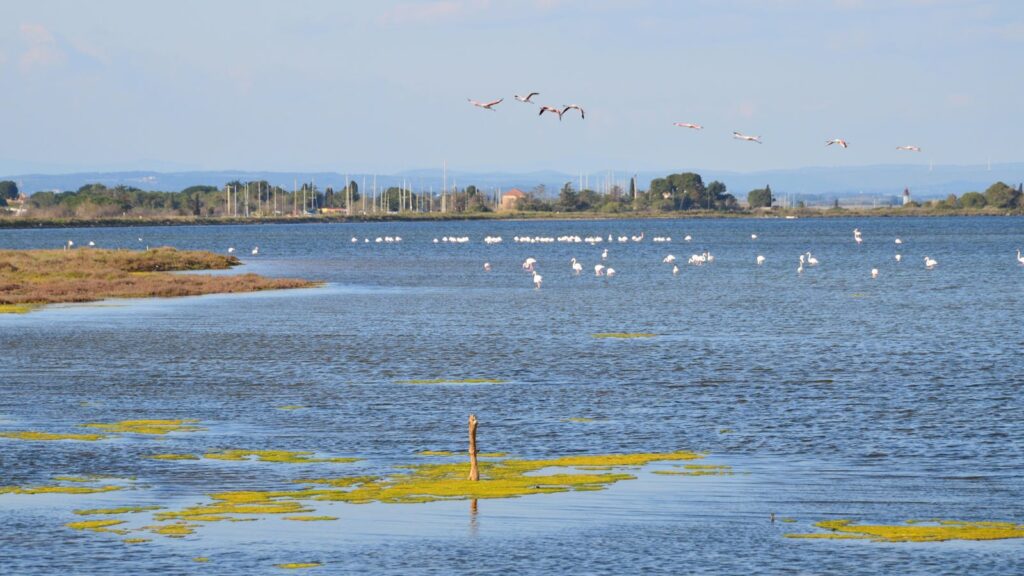
Understanding flamingo behavior, including their one-legged stance, has important implications for conservation efforts. As wetland habitats face increasing threats from development, pollution, and climate change, flamingo populations in many regions are declining. Their specialized adaptations, including the energy-efficient one-legged posture, reflect millions of years of evolution in specific environmental conditions. Changes to water temperature, chemistry, or depth can disrupt the delicate balance that makes their unique lifestyle viable. Conservation strategies must consider these behavioral adaptations when designing protected areas or managing wetland ecosystems. By recognizing how intimately flamingo physiology is tied to their environment, conservationists can better protect not just the birds themselves but the conditions that allow their remarkable adaptations to function effectively.
Future Research Directions
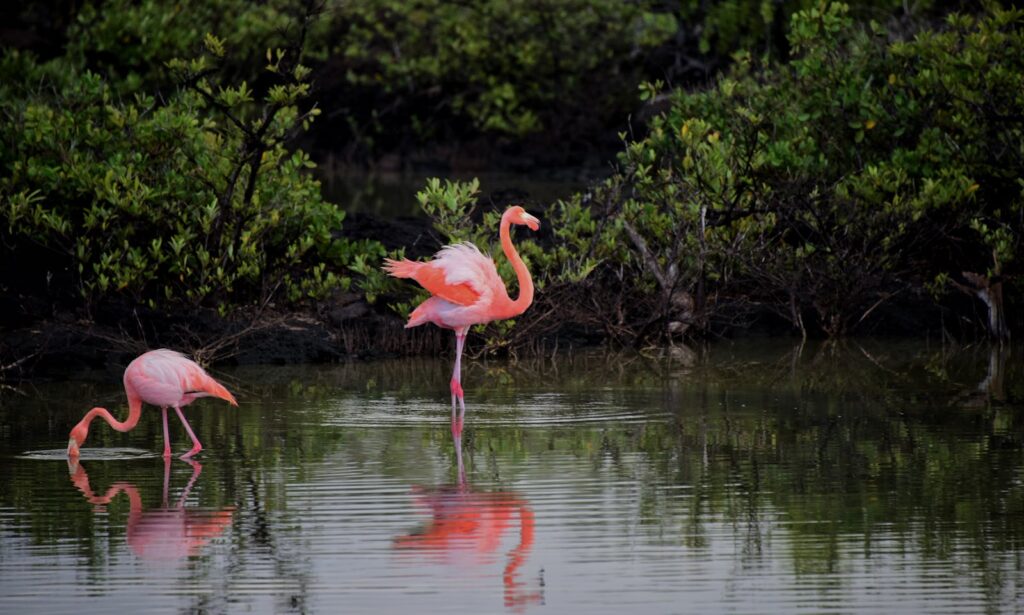
While recent studies have significantly advanced our understanding of the flamingo’s one-legged stance, several questions remain unanswered. Researchers are now using advanced motion capture technology and thermal imaging to gain more detailed insights into the biomechanics and energy dynamics of this behavior. Questions about how young flamingos learn this skill, whether individuals have preferred standing legs, and how environmental changes might affect this behavior remain active areas of investigation. Future research may also explore the neurological aspects of maintaining balance and the potential cognitive components involved in deciding when to switch between one and two-legged stances. As our understanding deepens, the flamingo’s seemingly simple posture continues to reveal new layers of evolutionary sophistication, reminding us that nature’s solutions often hide remarkable complexity beneath apparent simplicity.
The mystery of why flamingos stand on one leg exemplifies how even seemingly straightforward animal behaviors can involve intricate adaptations shaped by multiple evolutionary pressures. What once appeared to be merely an odd quirk has been revealed as an elegant solution combining energy efficiency, thermoregulation, and biomechanical innovation. The flamingo’s iconic stance represents not just a visual curiosity but a masterpiece of natural engineering—one that continues to inspire scientific inquiry and human admiration. As we deepen our understanding of these remarkable birds, their one-legged posture stands as a reminder of nature’s boundless creativity in solving the fundamental challenges of survival.
